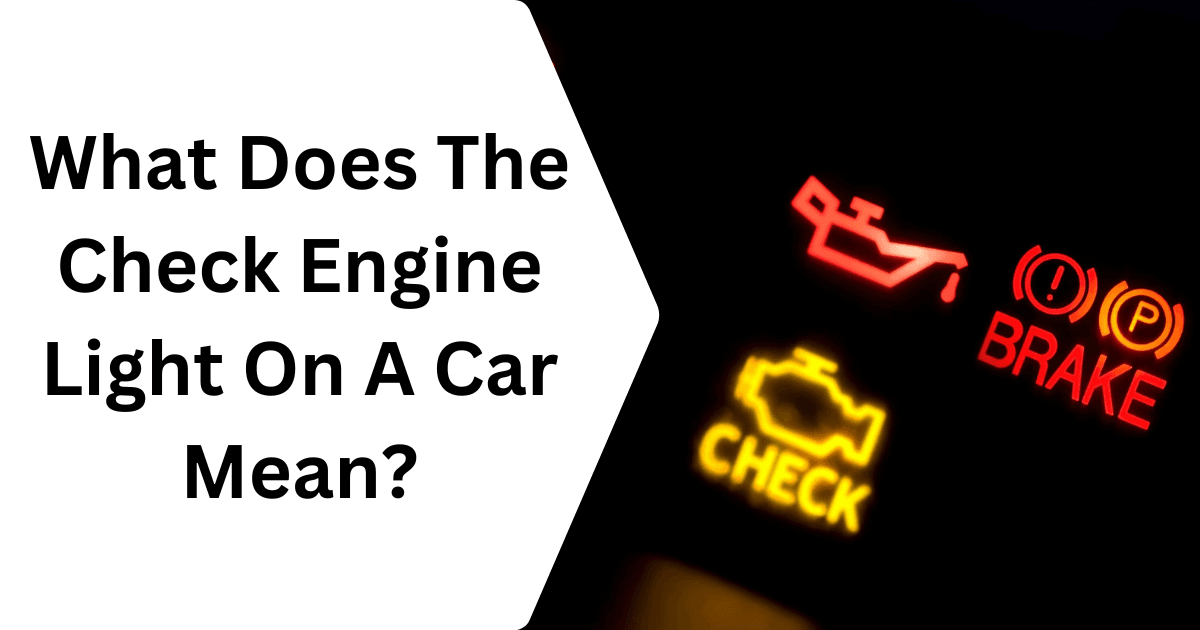The check engine light on your car’s dashboard is a warning signal that no driver wants to see. It indicates that the onboard diagnostics system (OBD-II) has detected a problem within the vehicle’s emissions, ignition, fuel, or exhaust systems. The issue could be as minor as a loose gas cap or as severe as a failing catalytic converter or engine misfire. While it might seem tempting to ignore this light, it’s crucial to understand that addressing it promptly can save you from expensive repairs later.
Typically displayed as a yellow or orange engine outline with the words “Check” or “Service Engine,” the light comes on momentarily when the car starts, as part of a routine system check. However, if it stays illuminated, it means there’s an active issue. A flashing or blinking check engine light is even more serious, signaling problems like a misfire that could lead to significant damage, such as a costly catalytic converter replacement.
Common Reasons for the Check Engine Light
- Loose or Faulty Gas Cap: One of the simplest reasons for the check engine light to come on is a loose or faulty gas cap. The gas cap seals the fuel system and maintains proper pressure, preventing fuel vapors from escaping. If it’s not tightened correctly or is damaged, the system detects a loss of pressure and triggers the warning light. This issue is easy to fix—tighten the cap securely or replace it if it’s cracked or worn out. Ignoring it can lead to reduced fuel efficiency and, over time, may cause more significant issues in the fuel system.
- Oxygen Sensor Issues: The oxygen sensor monitors the amount of unburned oxygen in your car’s exhaust and helps regulate the fuel-air mixture for efficient combustion. A failing oxygen sensor can cause the engine to burn too much fuel, resulting in poor mileage and increased emissions. You might notice a rough idle or hesitation when accelerating, as well as the check engine light.
- Catalytic Converter Problems: The catalytic converter is a critical part of your car’s emissions system, designed to reduce harmful pollutants in the exhaust. When it’s not functioning properly, you may notice reduced engine performance, a strong sulfur smell from the exhaust, or even overheating. The check engine light will usually turn on if the catalytic converter is failing. Repairs can be expensive, often costing over #500,000 so addressing the issue early—such as replacing a failing oxygen sensor—can help prevent catalytic converter failure.
- Spark Plug and Ignition Coil Faults: Spark plugs and ignition coils play a vital role in igniting the fuel-air mixture in the engine cylinders. Worn or damaged spark plugs can cause misfires, rough idling, and difficulty starting the car. Ignition coil issues often result in similar symptoms. These problems can trigger the check engine light and, if left unresolved, lead to serious engine damage.
- Mass Airflow Sensor Failures: The mass airflow (MAF) sensor measures the amount of air entering the engine to determine the correct fuel-air mixture. When this sensor malfunctions, it can cause the engine to run too lean (not enough fuel) or too rich (too much fuel). Symptoms include poor acceleration, reduced fuel economy, and hesitation during driving. A failing MAF sensor will cause the check engine light to illuminate, and ignoring it can lead to more extensive engine damage over time.
What to Do When the Check Engine Light Comes On
- Pay Attention to the Light’s Behavior: If the light is steady, it means there’s an issue that requires attention, but it’s not an emergency. However, if the light is flashing or blinking, it indicates a serious problem, such as an engine misfire, which can cause severe damage if ignored. In this case, stop driving as soon as it’s safe and have your car inspected immediately.
- Check for Simple Solutions: A loose or damaged gas cap is one of the most common and easily fixed triggers for the check engine light. Tighten the cap and see if the light goes off after a few starts. If the light remains on, the problem might be more complex.
- Use an OBD-II Scanner: If you have access to an OBD-II scanner, you can plug it into the connector under the dashboard to retrieve diagnostic trouble codes (DTCs). These codes provide clues about what’s causing the light to come on, such as a faulty sensor or a misfire. Many auto parts stores offer free code-reading services to help you identify the issue.
- Address the Problem: Once you know the problem, decide how to proceed. Minor issues like replacing a spark plug or oxygen sensor can often be handled with basic tools and a bit of guidance if you’re comfortable with DIY repairs. For more significant or unclear issues, it’s best to consult a professional mechanic for a detailed inspection and repair.
- Avoid Delaying Repairs: Even if your car seems to be running fine, it’s crucial not to ignore the check engine light. Small problems can lead to bigger issues, such as reduced fuel efficiency, increased emissions, or damage to expensive parts like the catalytic converter. Prompt attention can save you time, money, and frustration down the road.
Preventing Check Engine Light Issues
- Keep Up with Regular Maintenance: Routine maintenance, such as timely oil changes, air filter replacements, and engine tune-ups, is crucial for keeping your car in optimal condition. These services help prevent issues that could trigger the check engine light, such as clogged filters or worn-out spark plugs.
- Use High-Quality Fuel and Parts: Low-quality fuel or aftermarket parts can cause problems in the fuel and ignition systems. Poor fuel can leave deposits in the engine, while substandard parts may fail prematurely, triggering the check engine light. To avoid these issues, use top-tier fuel and trusted certified replacement parts whenever possible.
- Inspect and Replace the Gas Cap: A loose or damaged gas cap is a common and preventable cause of the check engine light. Check your gas cap regularly for cracks or wear, and ensure it’s tightly sealed after refueling. If it’s worn out, replace it promptly to avoid pressure issues in the fuel system.
- Address Minor Issues Quickly: Pay attention to small warning signs, like unusual noises, reduced fuel efficiency, or a rough idle. Tackling these problems early can prevent them from escalating into larger, more expensive repairs that could trigger the check engine light.
- Monitor Dashboard Alerts and Sensors: The check engine light often works alongside other dashboard warnings. If you notice additional alerts, such as low oil pressure or overheating, address them immediately. Regularly checking components like the oxygen sensor, mass airflow sensor, and catalytic converter ensures they function properly and reduces the risk of problems.




